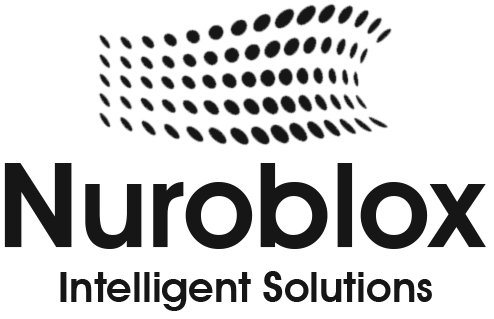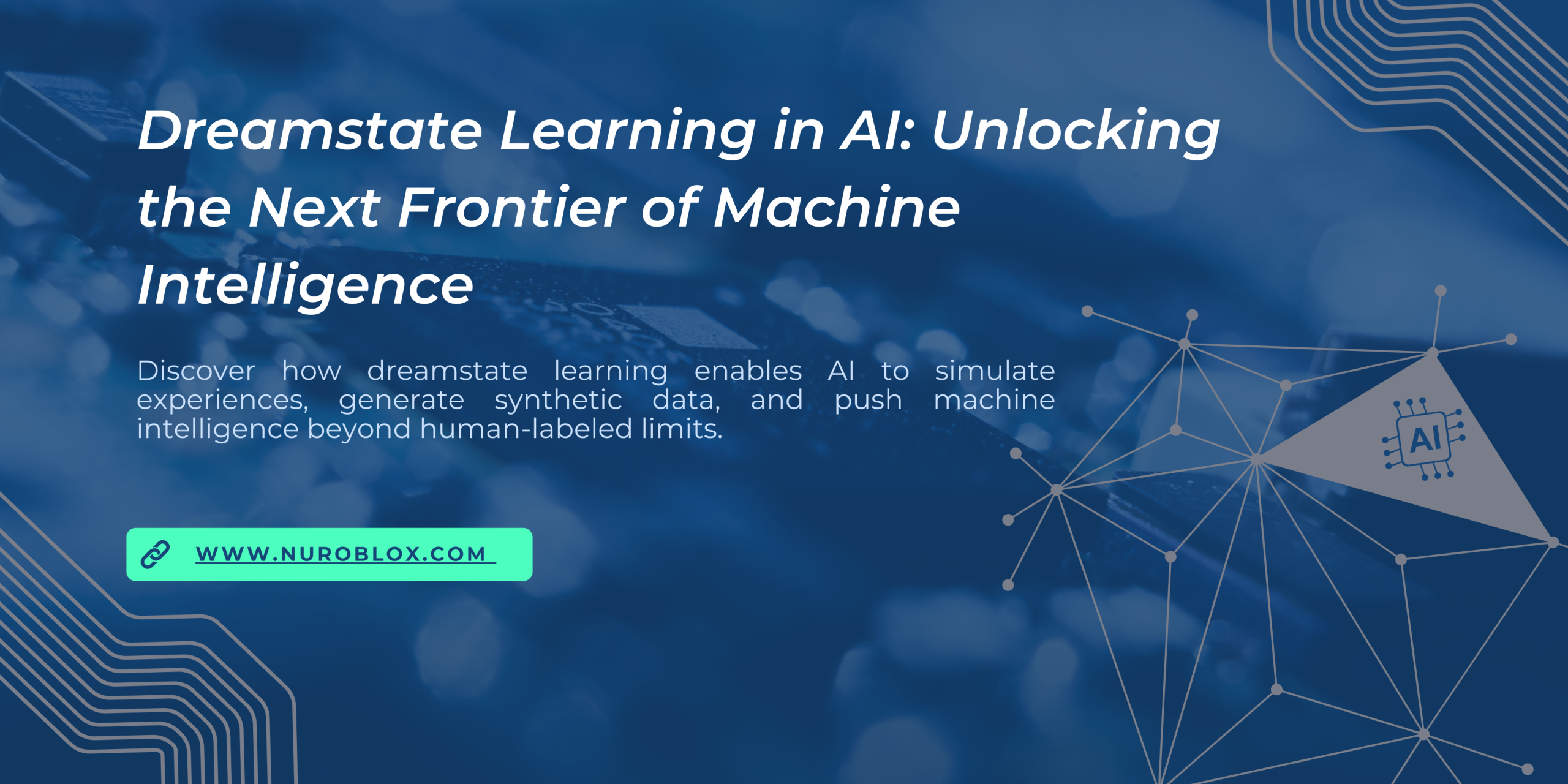Dreamstate Learning in AI: Unlocking the Next Frontier of Machine Intelligence
Artificial intelligence has rapidly evolved through waves of innovation symbolic AI, machine learning, deep learning, and most recently, generative AI. But despite these breakthroughs, machines remain highly dependent on labeled datasets and human supervision.
Enter dreamstate learning in AI, an emerging paradigm inspired by human sleep and dreaming processes, where the brain consolidates memory, processes emotions, and simulates “what-if” scenarios. In AI, dreamstate learning refers to methods where algorithms simulate experiences during offline phases, generating synthetic data or imagined scenarios that improve learning without explicit external input.
Just as the human brain uses dreams to replay and restructure experiences, AI agents deploying dreamstate learning can train in a self-supervised, resource-efficient way expanding knowledge, testing possibilities, and improving future decisions.
According to MIT’s Computer Science and Artificial Intelligence Lab (CSAIL, 2023), simulation-based learning techniques inspired by dreaming mechanisms reduce reinforcement learning sample inefficiency by up to 40%. Similarly, DeepMind’s research on “dreamer” agents (2020–2024) showed remarkable improvements in task completion when agents “imagined” outcomes before executing them.
Understanding Dreamstate Learning in AI
Dreamstate learning is not about machines literally “dreaming.” Instead, it refers to AI models simulating offline phases of creativity, memory consolidation, and scenario exploration mirroring how humans benefit from dreams during sleep.
Core Principles of Dreamstate Learning
- Synthetic Data Generation- Using internal generative models, AI creates synthetic training experiences.
- Self-Supervision- Agents generate “imagined” tasks, reducing dependency on manually labeled
datasets. - Counterfactual Exploration- Dream phases allow agents to test “what if” outcomes safely.
- Memory Replay- Models replay past experiences, re-encoding them in optimized formats.
- Imagination-Augmented Planning- Dreams extend the ability to forecast long-horizon
consequences before real-world action.
Comparison: Traditional vs Dreamstate Learning
| Aspect | Traditional AI Learning | Dreamstate Learning in AI |
| Data Source | External labeled datasets | Synthetic self-generated data |
| Learning Mode | Online (real environment) | Offline (simulated environment) |
| Cost | High training cost, energy | Reduced cost, sample efficiency |
| Exploration | Trial & error dependence | Imagination-based exploration |
| Adaptability | Limited | High – models adapt quickly with replay cycles |
By blending reinforcement learning (RL), generative modeling (GANs/VAEs), and neuro-inspired mechanisms, dreamstate learning enables machines to hallucinate useful future states and refine knowledge without costly experimentation.
Biological Inspiration – How Humans Learn in Dreamstates
Neuroscience has long studied how human brains consolidate memories during sleep. Studies show-
- REM sleep- Reactivates memory traces, reinforcing learning.
- Dream simulation- Exposes the brain to hypothetical and creative combinations of stored patterns.
- Skill consolidation- Athletes and learners often improve performance after “sleeping on it.”
Similarly, AI is attempting to replicate this offline learning by consolidating what was trained during “wake cycles” (active training) by creating dream phases to rehearse and reimagine scenarios, boosting overall intelligence capability.
Enterprise Applications of Dreamstate Learning
Dreamstate learning in AI has transformative enterprise implications, especially for industries needing safe simulated environments and cost-efficient training.
Autonomous Systems (Robotics & Vehicles)
- Robotics- Robots train in synthetic dreamlike simulations to refine motor control before deploying in warehouses.
- Autonomous Vehicles- Cars can test millions of “what if” traffic scenarios virtually, improving safety readiness.
Healthcare R&D
- Drug Discovery- Models simulate molecular interactions in “dream phases,” accelerating research.
- Clinical AI- Systems virtually test treatment plans before recommending real-world interventions.
Enterprise Knowledge & Decision Support
Models generate alternative market strategies through scenario dreaming, enabling executives to
test high-risk decisions with digital twins.
Cybersecurity
- Dreamstate-infused AI simulates diverse attack scenarios offline, evolving into more resilient defense systems without real-world breaches.
Manufacturing & Supply Chains
- Predictive models run dreamlike stress tests across supply networks, envisioning disruptions and testing resiliency strategies.
Advantages of Dreamstate Learning in Enterprise AI
Business Value Drivers
- Efficiency- Reduced need for labeled datasets, cutting costs of AI development.
- Safety- Dangerous or sensitive scenarios tested virtually instead of in real operations.
- Adaptability- Systems improve by replaying experiences and synthesizing new possibilities.
- Resilience- Ability to imagine disruptions builds future-ready enterprises.
- Innovation Velocity- Enterprise teams ideate faster by exploring “what if” digital futures.
Challenges in Dreamstate Learning
Despite its promise, adoption faces challenges.
- Model Accuracy- Synthetic dream states risk compounding hallucinations if unguided.
- Compute Costs- While reducing data needs, training generative imagination models themselves is expensive.
- Explainability- Simulated outcomes must remain interpretable in compliance-heavy industries.
- Ethical Risks- Unchecked scenarios may reinforce bias or ethically questionable behaviors.
- Immaturity of Field- Research is nascent, requiring enterprises to expect experimentation over guaranteed efficiency

Enterprises deploying dreamstate AI require a hybrid architecture combining real-world data with synthetic dreaming cycles.
Key Layers
- Experience Layer- Data collected from real-world or enterprise operations.
- Generative Engine- Models (GANs, VAEs, diffusion) simulate dreamlike synthetic data.
- Replay Buffer- Stores past experiences for re-simulation.
- Imagination Layer- Counterfactual reasoning and alternative scenario synthesis.
- Policy Update Engine- Reinforcement learner integrates dream outcomes into strategies.
- Governance Layer- Ensures explainability and bias mitigation.
Case Studies and Research Highlights
- Google DeepMind DreamerV3 (2023)- Achieved superior performance across robotic control tasks by imagining outcomes before acting.
- MIT CSAIL “Dreamscapes” Simulation Environment (2022)- Agents improved planning efficiency by 40% through dreamlike environment simulation.
- NVIDIA Research (2024)- Applied dreamstate techniques for autonomous driving, generating billions of synthetic driving hours without physical testing.
Strategic Roadmap for Enterprises to Adopt Dreamstate AI
Step 1: Identify Safe Dreaming Domains
Start with simulation-heavy use cases where synthetic dreaming adds clear business value (e.g., supply chain risk modeling).
Step 2: Pilot Hybrid Models
Combine reinforcement learning agents with generative imagination for “offline dreaming” experiments.
Step 3: Build Explainability Layer
Ensure outputs from dream cycles are transparent and auditable.
Step 4: Scale Through Digital Twins
Leverage enterprise-wide digital twin ecosystems as dream spaces for AI agents.
Step 5: Future-Proof Workforce
Upskill teams in neuro-inspired AI, generative simulation, governance, and safe scenario modeling.
The Future of Dreamstate Learning in AI
Dreamstate learning marks AI’s next frontier where machines not only learn from data but dream beyond it.
Predicted Trends (2025–2035)-
- Convergence of Dreamstate and Generative AI- LLMs enhanced with imagination-driven planning.
- Massive Data Efficiency- Enterprises train robust models with 90% less labeled data.
- AI Creativity Breakthroughs- Dreamstate AI will design products, molecules, and strategies never conceived before.
- Ubiquity in Digital Twins- Enterprises will rely on dreamstate simulations before executing costly real-world changes.
Conclusion: Dreaming Enterprises into the Future
Dreamstate learning in AI represents more than a technical innovation; it’s a paradigm shift in how enterprises will innovate, test, and adapt. Just as humans rely on dreams to consolidate and imagine futures, enterprises can now leverage AI’s dream phases to reduce costs, accelerate insights, improve
resilience, and unlock creativity at scale.
By embedding dreamstate AI into core operations and governance frameworks, organizations can not only evolve toward intelligent enterprises, but also pioneer a future where machines think, adapt, and dream alongside humans.


